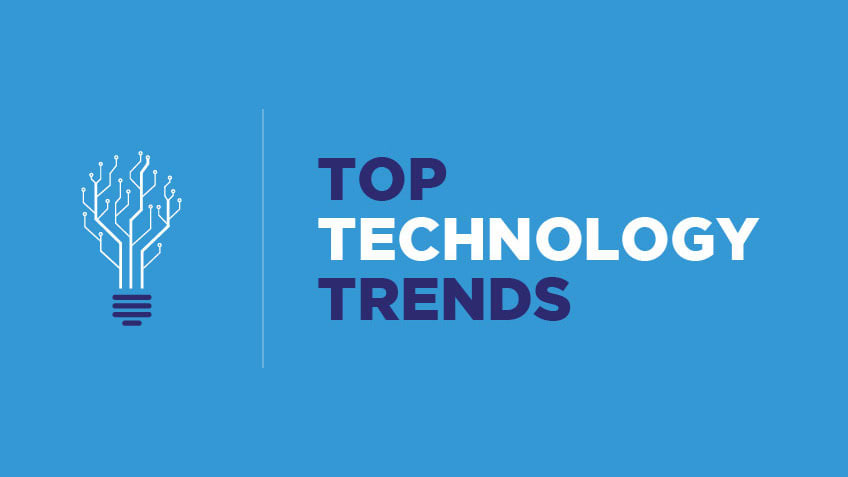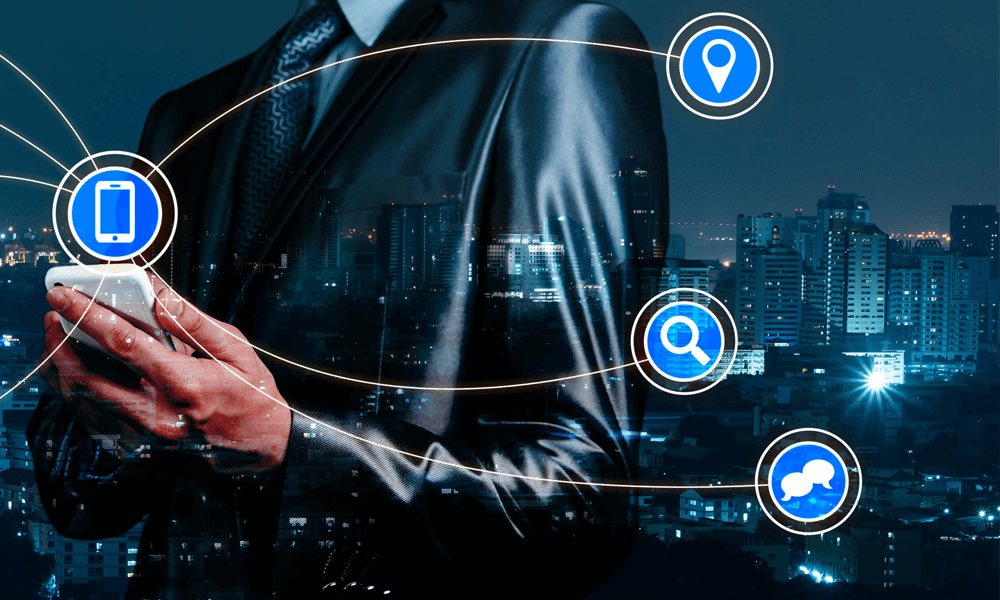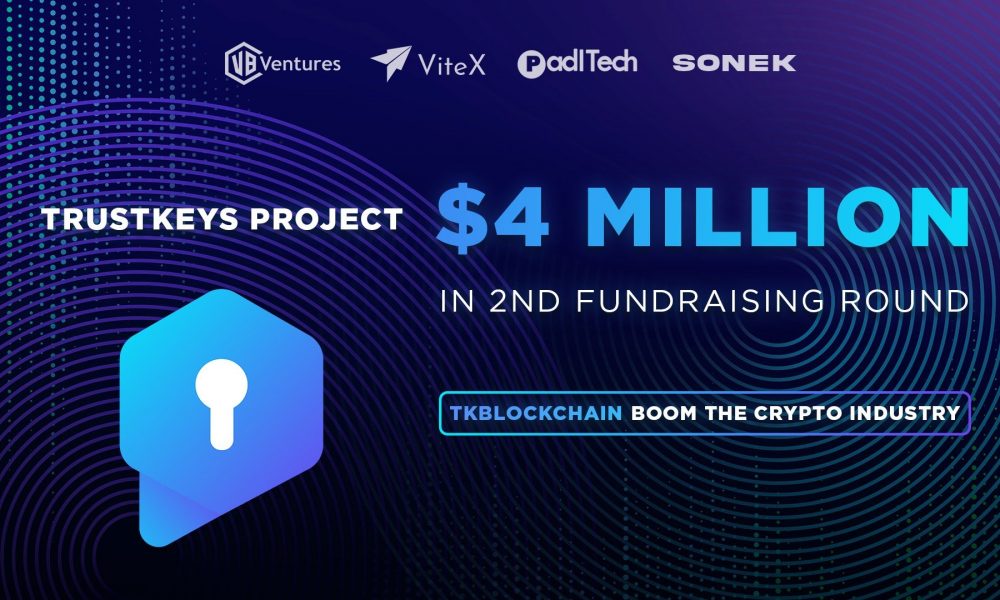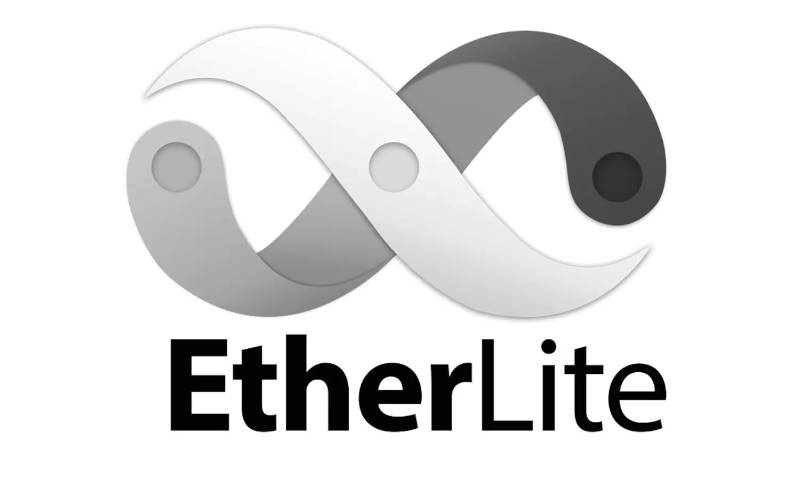Category: Technology
Top 9 New Technology Trends for 2021
Technology today is evolving at such a rapid pace, enabling faster change and progress, causing an acceleration of the rate of change, until eventually, it will become exponential. However, it is not only technology trends and top technologies that are evolving, a lot more has changed this year due to the outbreak of COVID-19 making IT professionals realize that their role will not stay the same in the contactless world tomorrow. And an IT professional in 2020-21 will constantly be learning, unlearning, and relearning (out of necessity if not desire).
What does this mean for you? It means staying current with new technology trends. And it means keeping your eyes on the future to know which skills you’ll need to know to secure a safe job tomorrow and even learn how to get there. All bows to the worldwide pandemic, most of the global IT population is sitting back, working from home. And if you wish to make the most of your time at home, here are the top 9 new technology trends you should watch for and make an attempt at in 2021, and possibly secure one of the jobs that will be created by these new technology trends.
Here is the list of the top 9 new and trending technologies:
- Artificial Intelligence (AI) and Machine Learning
- Robotic Process Automation (RPA)
- Edge Computing
- Quantum Computing
- Virtual Reality and Augmented Reality
- Blockchain
- Internet of Things (IoT)
- 5G
- Cyber Security
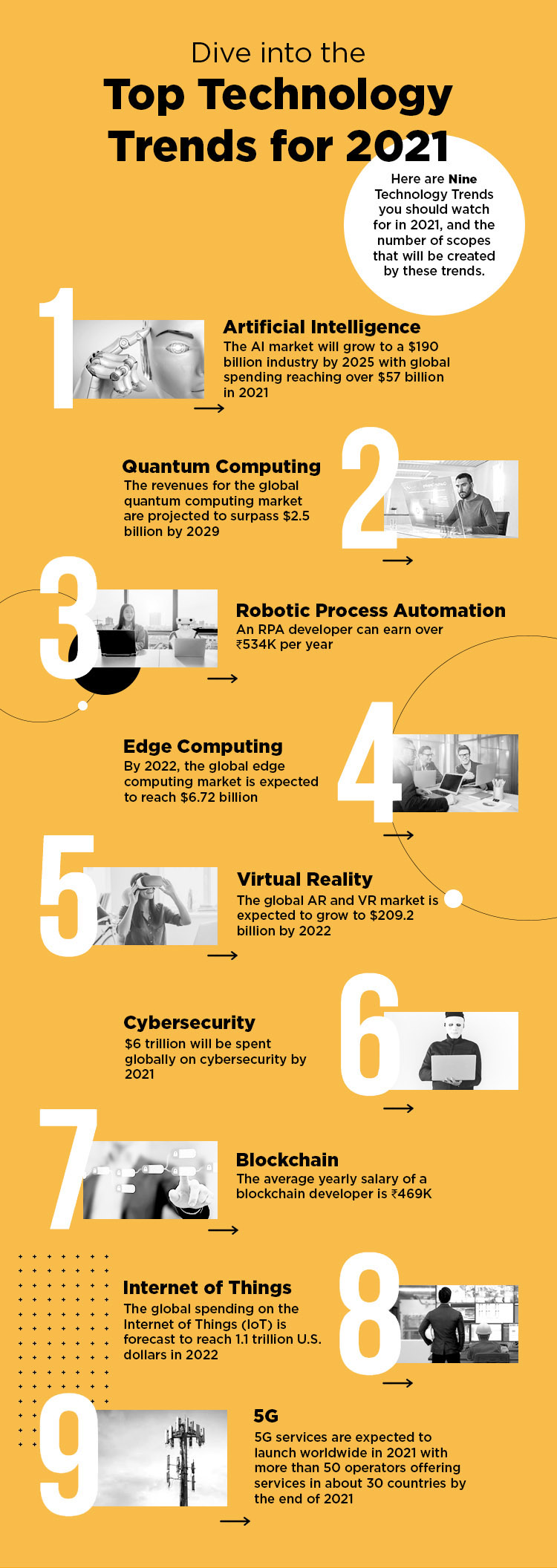
1. Artificial Intelligence (AI) and Machine Learning
Artificial Intelligence, or AI, has already received a lot of buzz in the past decade, but it continues to be one of the new technology trends because its notable effects on how we live, work and play are only in the early stages. AI is already known for its superiority in image and speech recognition, navigation apps, smartphone personal assistants, ride-sharing apps and so much more.
Other than that AI will be used further to analyze interactions to determine underlying connections and insights, to help predict demand for services like hospitals enabling authorities to make better decisions about resource utilization, and to detect the changing patterns of customer behaviour by analyzing data in near real-time, driving revenues and enhancing personalized experiences.
The AI market will grow to a $190 billion industry by 2025 with global spending on cognitive and AI systems reaching over $57 billion in 2021. With AI spreading its wings across sectors, new jobs will be created in development, programming, testing, support and maintenance, to name a few. On the other hand AI also offers some of the highest salaries today ranging from over $1,25,000 per year (machine learning engineer) to $145,000 per year (AI architect) – making it the top new technology trend you must watch out for!
Machine Learning the subset of AI, is also being deployed in all kinds of industries, creating a huge demand for skilled professionals. Forrester predicts AI, machine learning, and automation will create 9 percent of new U.S. jobs by 2025, jobs including robot monitoring professionals, data scientists, automation specialists, and content curators, making it another new technology trend you must keep in mind too!
astering AI and machine learning will help you secure jobs like:
- AI Research Scientist
- AI Engineer
- Machine Learning Engineer
- AI Architect
2. Robotic Process Automation (RPA)
Like AI and Machine Learning, Robotic Process Automation, or RPA, is another technology that is automating jobs. RPA is the use of software to automate business processes such as interpreting applications, processing transactions, dealing with data, and even replying to emails. RPA automates repetitive tasks that people used to do.
Although Forrester Research estimates RPA automation will threaten the livelihood of 230 million or more knowledge workers or approximately 9 percent of the global workforce, RPA is also creating new jobs while altering existing jobs. McKinsey finds that less than 5 percent of occupations can be totally automated, but about 60 percent can be partially automated.
For you as an IT professional looking to the future and trying to understand new technology trends, RPA offers plenty of career opportunities, including developer, project manager, business analyst, solution architect, and consultant. And these jobs pay well. An RPA developer can earn over ₹534K per year – making it the next technology trend you must keep a watch on!
Mastering RPA will help you secure high paying jobs like:
- RPA Developer
- RPA Analyst
- RPA Architect
3. Edge Computing
Formerly a new technology trend to watch, cloud computing has become mainstream, with major players AWS (Amazon Web Services), Microsoft Azure and Google Cloud Platform dominating the market. The adoption of cloud computing is still growing, as more and more businesses migrate to a cloud solution. But it’s no longer the emerging technology trend. Edge is.
As the quantity of data organizations are dealing with continues to increase, they have realized the shortcomings of cloud computing in some situations. Edge computing is designed to help solve some of those problems as a way to bypass the latency caused by cloud computing and getting data to a datacenter for processing. It can exist “on the edge,” if you will, closer to where computing needs to happen. For this reason, edge computing can be used to process time-sensitive data in remote locations with limited or no connectivity to a centralized location. In those situations, edge computing can act like mini datacenters.
Edge computing will increase as use of the Internet of Things (IoT) devices increases. By 2022, the global edge computing market is expected to reach $6.72 billion. And this new technology trend is only meant to grow and nothing less, creating various jobs, primarily for software engineers.
Keeping in line with cloud computing (including new-age edge and quantum computing) will help you grab amazing jobs like:
- Cloud Reliability Engineer
- Cloud Infrastructure Engineer
- Cloud Architect and Security Architect
- DevOps Cloud Engineer
4. Quantum Computing
Next remarkable technology trend is quantum computing, which is a form of computing that takes advantage of quantum phenomena like superposition and quantum entanglement. This amazing technology trend is also involved in preventing the spread of the coronavirus, and to develop potential vaccines, thanks to its ability to easily query, monitor, analyze and act on data, regardless of the source. Another field where quantum computing is finding applications in banking and finance, to manage credit risk, for high-frequency trading and fraud detection.
Quantum computers are now a multitude times faster than regular computers and huge brands like Splunk, Honeywell, Microsoft, AWS, Google and many others are now involved in making innovations in the field of Quantum Computing. The revenues for the global quantum computing market are projected to surpass $2.5 billion by 2029. And to make a mark in this new trending technology, you need to have experience with quantum mechanics, linear algebra, probability, information theory, and machine learning.
5. Virtual Reality and Augmented Reality
The next exceptional technology trend – Virtual Reality (VR) and Augmented Reality (AR), and Extended Reality (ER). VR immerses the user in an environment while AR enhances their environment. Although this technology trend has primarily been used for gaming thus far, it has also been used for training, as with VirtualShip, a simulation software used to train U.S. Navy, Army and Coast Guard ship captains.
In 2021, we can expect these forms of technologies being further integrated into our lives. Usually working in tandem with some of the other new technologies we’ve mentioned in this list, AR and VR have enormous potential in training, entertainment, education, marketing, and even rehabilitation after an injury. Either could be used to train doctors to do surgery, offer museum-goers a deeper experience, enhance theme parks, or even enhance marketing, as with this Pepsi Max bus shelter.
Fun fact: 14 million AR and VR devices were sold in 2019. The global AR and VR market is expected to grow to $209.2 billion by 2022, only creating more opportunities in the trending technology, and welcoming more professionals ready for this game-changing field.
While some employers might look for optics as a skill-set, note that getting started in VR doesn’t require a lot of specialized knowledge – basic programming skills and a forward-thinking mindset can land a job; another reason why this new technology trend should make up to your list of lookouts!
6. Blockchain
Although most people think of blockchain technology in relation to cryptocurrencies such as Bitcoin, blockchain offers security that is useful in many other ways. In the simplest of terms, blockchain can be described as data you can only add to, not take away from or change. Hence the term “chain” because you’re making a chain of data. Not being able to change the previous blocks is what makes it so secure. In addition, blockchains are consensus-driven, so no one entity can take control of the data. With blockchain, you don’t need a trusted third-party to oversee or validate transactions.
Several industries are involving and implementing blockchain, and as the use of blockchain technology increases, so too does the demand for skilled professionals. From a birds eye view, a blockchain developer specializes in developing and implementing architecture and solutions using blockchain technology. The average yearly salary of a blockchain developer is ₹469K.
If you are intrigued by Blockchain and its applications and want to make your career in this trending technology, then this is the right time to start. To get into Blockchain, you need to have hands-on experience of programming languages, the fundamentals of OOPS, flat and relational databases, data structures, web app development, and networking.
Mastering blockchain can help you scale up in a variety of fields and industries:
- Risk Analyst
- Tech Architect
- Crypto Community Manager
- Front End Engineer
7. Internet of Things (IoT)
Another promising new technology trend is IoT. Many “things” are now being built with WiFi connectivity, meaning they can be connected to the Internet—and to each other. Hence, the Internet of Things, or IoT. The Internet of Things is the future, and has already enabled devices, home appliances, cars and much more to be connected to and exchange data over the Internet.
As consumers, we’re already using and benefitting from IoT. We can lock our doors remotely if we forget to when we leave for work and preheat our ovens on our way home from work, all while tracking our fitness on our Fitbits. However, businesses also have much to gain now and in the near future. The IoT can enable better safety, efficiency and decision-making for businesses as data is collected and analyzed. It can enable predictive maintenance, speed up medical care, improve customer service, and offer benefits we haven’t even imagined yet.
And we’re only in the beginning stages of this new technology trend: Forecasts suggest that by 2030 around 50 billion of these IoT devices will be in use around the world, creating a massive web of interconnected devices spanning everything from smartphones to kitchen appliances. The global spending on the Internet of Things (IoT) is forecast to reach 1.1 trillion U.S. dollars in 2022. New technologies such as 5G is expected to drive market growth in the coming years.
And if you wish to step foot in this trending technology, you will have to learn about Information security, AI and machine learning fundamentals, networking, hardware interfacing, data analytics, automation, understanding of embedded systems, and must have device and design knowledge.
8. 5G
The next technology trend that follows the IoT is 5G. Where 3G and 4G technologies have enabled us to browse the internet, use data driven services, increased bandwidths for streaming on Spotify or YouTube and so much more, 5G services are expected to revolutionize our lives. by enabling services that rely on advanced technologies like AR and VR, alongside cloud based gaming services like Google Stadia, NVidia GeForce Now and much more. It is expected to be used in factories, HD cameras that help improve safety and traffic management, smart grid control and smart retail too.
Just about every telecom company like Verizon, Tmobile, Apple, Nokia Corp, QualComm, are now working on creating 5G applications. 5G services are expected to launch worldwide in 2021 with more than 50 operators offering services in about 30 countries by the end of 2021, making it a new technology trend you must watch out for, and also save a spot in.
9. Cyber Security
Cyber security might not seem like trending technology, given that it has been around for a while, but it is evolving just as other technologies are. That’s in part because threats are constantly new. The malevolent hackers who are trying to illegally access data are not going to give up any time soon, and they will continue to find ways to get through even the toughest security measures. It’s also in part because new technology is being adapted to enhance security. As long as we have hackers, cybersecurity will remain a trending technology because it will constantly evolve to defend against those hackers.
As proof of the strong need for cybersecurity professionals, the number of cybersecurity jobs is growing three times faster than other tech jobs. Also, the need for proper cybersecurity is so high that by 2021, $6 trillion will be spent globally on cybersecurity.
You must note that however challenging the field is it also offers lucrative six-figure incomes, and roles can range from
- Ethical Hacker
- Malware Analyst
- Security Engineer
- Chief Security Officer
offering a promising career path for someone who wants to get into and stick with this evergreen trending technology.
9 New Technology Trends and 1 Solution to Succeed in Them
Although technologies are emerging and evolving all around us, these top 9 new technology trends offer promising career potential now and for the foreseeable future. And most of these trending technologies are welcoming skilled professionals, meaning the time is right for you to choose one, get trained, and get on board at the early stages of these trending technologies, positioning you for success now and in the future.
Blockchain And The Internet Of Things: 4 Important Benefits Of Combining These Two Mega Trends
The Internet of Things (IoT) and blockchain are two topics which are causing a great deal of hype and excitement, not just in the technology circle but in the wider business world, too.
Many say they are set to revolutionise all aspects of our lives, while others point out that there is a lot of hot air around both ideas, and a lot is yet to be proved.
However, the idea that putting them together could result in something even greater than the sum of its (not insignificant) parts, is something which is starting to gain traction.
In principle, it makes a lot of sense. IoT is a term used to describe the ongoing proliferation of always-online, data-gathering devices into our work and personal lives. Blockchain is an encrypted, distributed computer filing system designed to allow the creation of tamper-proof, real-time records.
Put them together and in theory, you have a verifiable, secure and permanent method of recording data processed by “smart” machines in the IoT.
Why combine blockchain and IoT?
There are several clear advantages to the idea of building smart machines able to communicate and operate via blockchain.
Firstly, there is the issue of oversight. With data transactions taking place between multiple networks owned and administered by multiple organisations, a permanent, immutable record means custodianship can be tracked as data, or physical goods, pass between points in the supply chain. Blockchain records are by their very nature transparent – activity can be tracked and analysed by anyone authorised to connect to the network.
If something goes wrong, breakages occur, data leaks where it shouldn’t, then the blockchain record makes it simple to identify the weak link and, hopefully, take remedial action.
Secondly, the use of encryption and distributed storage means that data can be trusted by all parties involved in the supply chain. Machines will record, securely, details of transactions that take place between themselves, with no human oversight.
Without the private keys giving write-access to the blockchain (which in this case would be held by machines), no human will be able to overwrite the record with inaccurate information.
Thirdly, the “smart contract” facilities provided by some blockchain networks, such as Ethereum, allow the creation of agreements which will be executed when conditions are met. This is likely to be highly useful when it comes to, for example, authorising one system to make a payment, when conditions indicate that delivery of a service has been provided.
Fourthly, blockchain offers the potential of greatly improving the overall security of the IoT environment. Much of the data generated by IoT is highly personal – for example, smart home devices have access to intimate details about our lives and daily routines. This is data that needs to be shared with other machines and services in order to be useful to us. But it also means there are far more openings for hackers to potentially attack us. Business and governments invested in IoT also have to contend with this increased scope for a data breach by criminals, rivals or foreign enemies.
Allowing access to data from IoT devices to be managed through blockchains would mean an additional layer of security that any malignant actor would have to bypass – one that would be secured by some of the most robust encryption standards available.
Centralised v decentralised systems
Above the fact that it will offer new opportunities, it is even possible that blockchain and IoT convergence will become a necessity at some point. If the current IoT paradigm – devices connected via a centralised cloud storage and processing service – continues, then systems are likely to become increasingly bloated, as data volumes, as well as the number of connected devices, continue to increase.
These cloud services are likely to become bottlenecks as the amount of data pumped through them increases. Blockchains can remedy this thanks to their distributed nature. Rather than an expensive, centralised data centre, a blockchain data storage network is duplicated across the hundreds (or potentially thousands, or millions) of computers and devices which make up the network. This huge amount of redundancy means data will always be close at hand when it’s needed, cutting down transfer times and meaning one server failure will be of no consequence to business activity.
Blockchain and IoT are both technologies which have big promises to keep. Both are already being widely and enthusiastically adopted by industry and the public sector, and there is a great deal of speculation about where each of them will lead. Combining them could be the key to ensuring those promises are kept while minimising the security and business risks that go hand-in-hand with technological change.
TrustKeys IDO To Follow As TKblockchain Closes $4 Million Funding Round
BRITISH VIRGIN ISLANDS / ACCESSWIRE / October 14, 2021 / CryptoNoCurrency SuperApp TrustKeys is one of the latest projects initiating its fundraising (No=Not Only). TrustKeys is currently on its second round of fundraising and has managed to raise $4 million so far. TKblockchain project is doing its funding rounds, a crucial step for any project before it goes through its Initial Dex Offering which will make the project available to the public.
This funding round is expected to be over by the end of the month on the 27th of October with the IDO to begin shortly after. So far, the project has attracted investment and support from Vitex Capital, VBC Ventures, SONEK. JSC, Paditech. JSC, MH Group, Noron.vn, Giuptoi.vn, Krystal.app .
Not Just A Wallet, An Ecosystem
TrustKeys is a blockchain project centered around its SuperApp which will provide a slew of different features such as a personal wallet with a 24-word seed, an exchange and a social media and messaging platform. These will just be part of the ecosystem as the project continues to develop newer innovations to integrate into the ecosystem. Moreover, the app is already available to users on the ios App Store.
The first and most prominent is the wallet. The TrustKeys wallet is native to the platform and functions similarly to others like Safepal and TrustWallet. The wallet allows users to hold tokens from multiple networks(ethereum, smart chain, etc.), giving users the ability to ‘own’ their coins in personal wallets rather than relying on a centralized exchange like Binance.
The wallet allows you to send crypto as you would expect but it also comes with a request feature enabling you to request payments from other TrustKeys users. NFT integration is also planned for a later date.
A Middle-ground Exchange And Encrypted Messaging
To most crypto novices, the popular centralized exchanges are the norm. For the slightly more advanced users, decentralized exchanges on defi like PancakeSwap become commonplace. A hybrid exchange is a union between both. It gives you the ability to trade with requiring extensive information. The TrustKeys exchange gives you access to spot trading with limit and market orders. Right now, margin trading is not yet available on the exchange.
Along with these features also comes a messenger that supports end-to-end encryption. Each account comes native with its own private and public key. The public key receives messages that only the private key can decrypt hence ensuring that privacy is maintained. The messenger has an inbuilt ‘send crypto’ function, allowing users to send crypto to whoever they’re talking to.
The final feature of the app is a social media platform. This will allow users to have a crypto news center where they can engage with like minds in the community. Tagged as ‘news feed’ on the app it comes with the following feature that brings accounts into your news feed.
So far the team is still following its roadmap and the end of the month should bring the project’s IDO up to date.
About TrustKeys:
TrustKeys Network is a project developed by TKBlockchain Company (headquartered in BVI – UK) that has self-financed to develop since 2018 until now. After completing the basic modules of the ecosystem, TrustKeys Network began to carry out communication and cooperation activities to introduce to the community and investors about this special project. Expected time to deploy in the 4th quarter of 2021 and IDO implementation in October.
Website | Telegram Group | Telegram Channel | Twitter | Medium
EtherLite is the Next Milestone for Cryptocurrency
The world of cryptocurrency is a growing new feature in the world that seems to be ever-changing with thousands now circulating crypto followers who can now add a new currency to the family. Now that the ETL, the native token on the new decentralized EtherLite blockchain, is ready for public trading.
With trades believed to start in July, The EtherLite team said that they have been audited by top experts and are incredibly happy to call it the year of the EtherLite.
There is no shortage of cryptocurrencies for investors to trade, with roughly a couple thousand circulating in the market. Investors can add one more name to the list, now that ETL is poised for public trading.
EtherLite uses the coveted proof-of-stake (PoS) consensus model as it seeks to pick off where its much larger peer, Ethereum, leaves off. In fact, EtherLite is a hard fork of Ethereum, representing a major change in the code of the larger blockchain that took place in May.
EtherLite has been moving through its roadmap, which in addition to the hard work has included an airdrop and an initial exchange offering. Now it is time for the token to hit exchanges.
The EtherLite team says that ETL has been audited by “top core experts” and is poised to begin trading on exchanges in July. They are quite ambitious and are calling it the “year of EtherLite.”
Differences Between EtherLite and Ethereum
EtherLite is a hard fork of Ethereum, which is the go-to blockchain for smart contracts, DeFi, non-fungible tokens (NFTs). This up-and-coming is created to address some of the shortcomings in the Ethereum network.
While there is only one Ethereum, EtherLite has the advantage as it holds features such as the EtherLite network has block times of five seconds and more than 10,000 transactions per second, Etherlite carries lower fees, high fees have been a stumbling block on Ethereum, causing some creators and developers to move to other blockchains. Users can stake their ETL to help maintain network security in exchange for rewards. Ethereum is transitioning from a proof-of-work (PoW) to a PoS consensus model.
One of EtherLite’s fantastic features is that it is compatible with the Ethereum Virtual Machine (EVM),. This means that developers can also use their decentralized apps (dApps) and smart contracts built on Ethereum on EtherLite.
The ETL token has a couple of use cases in the project’s ecosystem, including network governance as well as for fees on the EtherLite blockchain.
Public Trading
Trading in EtherLite will have its start on the 1st July. The pipeline of cryptocurrency exchanges that plan to support the new coin is growing with great excitement that is building in the crypto community. Social media holds up to 70,000 Etherlite followers, and the coin has yet to make its debut on cryptocurrency exchanges.
Now we just need to wait and see what this new cryptocurrency has to hold.
Souce: https://bitcoinchaser.com/
- ‹ Previous
- 1
- 2

